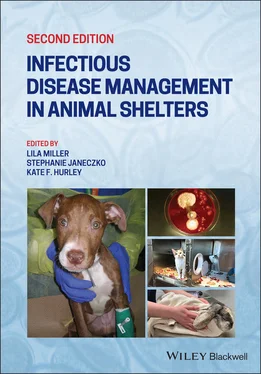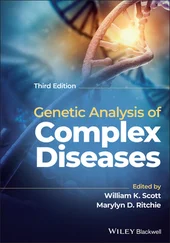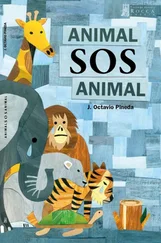9 Chapter 14Figure 14.1 CPV outbreak response flow chart.
10 Chapter 16Figure 16.1 Epidemiologic triangle representation of FIP.Figure 16.2 Current theory of the pathogenesis of FIP.Figure 16.3 (a) Ultrasound image of profound effusion in a young cat with FI...Figure 16.4 (a) Effusion from a cat with FIP.(b) Peritoneal effusion in ...Figure 16.5 (a) Feline lung with multifocal to diffuse pyogranulomas surroun...
11 Chapter 17Figure 17.1 Cystoisospora spp. oocysts recovered through sucrose centrifugal...Figure 17.2 Two Toxocara canis and numerous Trichuris vulpis eggs recovered ...Figure 17.3 Toxocara cati egg and Aelurostrongylus abstrusus larva recovered...Figure 17.4 Toxocara cati adult worms passed in the feces submitted for rout...Figure 17.5 Dipylidium caninum egg ball recovered through a squash preparati...
12 Chapter 18Figure 18.1 Heartworm lifecycle in the dog and cat.Figure 18.2 Inflammation and thickening of the arterial parenchyma in a dog ...Figure 18.3 A single dead adult heartworm was found at necropsy in a cat's h...Figure 18.4 Algorithm for minimizing heartworm transmission in relocated dog...Figure 18.5 Adult female and male heartworms. The female heartworm has a str...Figure 18.6 The susceptibility gap.Figure 18.7 Heartworms present in the pulmonary vasculature, and necrotic ma...Figure 18.8 A dead worm and endarteritis in a dog treated with “slow‐kill” t...
13 Chapter 19Figure 19.1 Trichodectes canis , the chewing louse of dogs. Note that the wid...Figure 19.2 Demodex gatoi recovered on a skin scraping from an affected cat....Figure 19.3 Large female Sarcoptes scabiei var. canis with adult male superi...Figure 19.4 Ctenocephalides felis adult flea recovered from a student's apar...Figure 19.5 Third instar calliphorid maggot recovered from an infected wound...
14 Chapter 20Figure 20.1 Puppy with an area of hair loss caudal to the ear. This was caus...Figure 20.2 Hair loss in the pre‐auricular area of a cat. It was initially a...Figure 20.3 Ear margin crusting due to dermatophytosis. This was caused by a...Figure 20.4 Multifocal areas of hair loss on the trunk of a dog caused by a ...Figure 20.5 Kitten with common “classical” lesions of dermatophytosis in the...Figure 20.6 Microsporum canis infection on the ear of a kitten. The initial ...Figure 20.7 “Classic” fluorescence of hairs with a Wood's lamp.Figure 20.8 Glowing hairs on a glass slide.Figure 20.9 The Wood's lamp can be used to locate hairs on a glass microscop...Figure 20.10 Note the glowing hairs on the glass slide on the microscope sta...Figure 20.11 Glowing hairs seen through the microscope lens. In this situati...Figure 20.12 Normal and affected hairs are present. Note that the infected h...Figure 20.13 Cuffs of ectothrix spores seen around an infected hair (40×).Figure 20.14 Box for cultures, legend embedded in the table.Figure 20.15 Culture in the bag with a thermometer, legend embedded in the t...Figure 20.16 Plate showing media mite growth, legend embedded in the table....Figure 20.17 This is an actual photograph of a large number of cultures prio...Figure 20.18 This picture demonstrates how useful the “look for the red and ...Figure 20.19 This picture shows a fungal culture plate where the entire surf...Figure 20.20 Microscopic examination of a suspect colony. Note the dark pigm...Figure 20.21 Microscopic view of tape preparation of M. gypseum. Note the la...Figure 20.22 (a and b) Microscopic examination of macroconidia of M. canis. ...Figure 20.23 M. canis distortum. Note the distorted form of M. canis. This s...Figure 20.24 Microscopic view of a young culture of M. canis showing common ...Figure 20.25 Microscopic view of a Trichophyton spp. Note the large numbers ...Figure 20.26 (a) Toothbrush cultures being inoculated on a plate. (b) Toothb...Figure 20.27 Various commercial fungal culture mediums. Small volume and sma...Figure 20.28 (a–c) This series of pictures is representative of a P1, P2, an...Figure 20.29 In this facility, red tape is used on the floor to designate a ...Figure 20.30 In order to control environmental contamination, a conscious ef...Figure 20.31 This is a portable treatment station. It is comprised of a plas...Figure 20.32 Portable rose garden sprayer used to apply topical treatment so...Figure 20.33 Application of lime sulfur to a cat using a garden sprayer. Not...Figure 20.34 Commercial Swiffer clothes are excellent ways to mechanically r...Figure 20.35 “Swiffer kit” for environmental sampling.Figure 20.36 The Swiffer should be wiped over the target area until visibly ...
15 Chapter 22Figure 22.1 Cases of animal rabies in the United States 1957–2007.Figure 22.2 Cases of rabies among wildlife in the United States, by year and...Figure 22.3 Distribution of major rabies virus variants in mesocarnivores in...Figure 22.4 (a–f) Reported cases of rabies in several species of wild and do...Figure 22.5 Map of vaccination laws by state in the United States and Puerto...Figure 22.6 Template algorithms for handling animals and humans exposed to r...
16 Chapter 23Figure 23.1 The most common mode of FIV transmission is from bite wounds. A ...Figure 23.2 Following FeLV infection, a strong immune response suppresses vi...Figure 23.3 Sample FeLV and FIV screening protocol beginning with point‐of‐c...
17 Chapter 24Figure 24.1 (a) Ferret cage.(b) Caging used for dogs and cats can be ada...Figure 24.2 Most ferrets can be handled for examination or treatment by hold...Figure 24.3 Restraint of a rabbit with one hand under its thorax and the oth...Figure 24.4 Restraint of a stressed rabbit by covering its eyes and supporti...Figure 24.5 To help facilitate examination or medication administration a to...Figure 24.6 Restraint of a guinea pig by fully supporting their weight with ...
1 Cover Page
2 Title Page Infectious Disease Management in Animal Shelters Second Edition Edited by Lila Miller, BS, DVM Vice President, Shelter Medicine (retired) American Society for the Prevention of Cruelty to Animals (ASPCA) New York, NY, USA Stephanie Janeczko, DVM, MS, DABVP (Shelter Medicine and Canine/Feline Practice), CAWA Vice President, Shelter Medicine Services Director, Julie Morris Shelter Medicine Residency Program American Society for the Prevention of Cruelty to Animals New York, NY, USA Kate F. Hurley, DVM, MPVM, DABVP (Shelter Medicine Practice) Director, UC Davis Koret Shelter Medicine Program Assistant Clinical Professor Shelter Medicine and Small Animal Population Health School of Veterinary Medicine University of California Davis, CA, USA
3 Copyright Page
4 Dedication Page
5 Contributors
6 Preface
7 Acknowledgments
8 Table of Contents
9 Begin Reading
10 Index
11 WILEY END USER LICENSE AGREEMENT
1 iii
2 iv
3 vi
4 ix
5 x
6 xi
7 xiii
8 xiv
9 xv
10 1
11 2
12 3
13 4
14 5
15 6
16 7
17 8
18 9
19 10
20 11
21 12
22 13
23 14
24 15
25 16
26 17
27 18
28 19
29 20
30 21
31 22
32 23
33 24
34 25
35 26
36 27
37 28
38 29
39 30
40 31
41 32
42 33
43 34
44 35
45 36
46 37
47 38
48 39
49 40
50 41
51 42
52 43
53 44
54 45
55 46
56 47
57 48
58 49
59 50
60 51
61 52
62 53
63 54
64 55
65 56
66 57
67 58
68 59
69 60
70 61
71 62
72 63
73 64
74 65
75 66
76 67
77 68
78 69
79 70
80 71
Читать дальше












